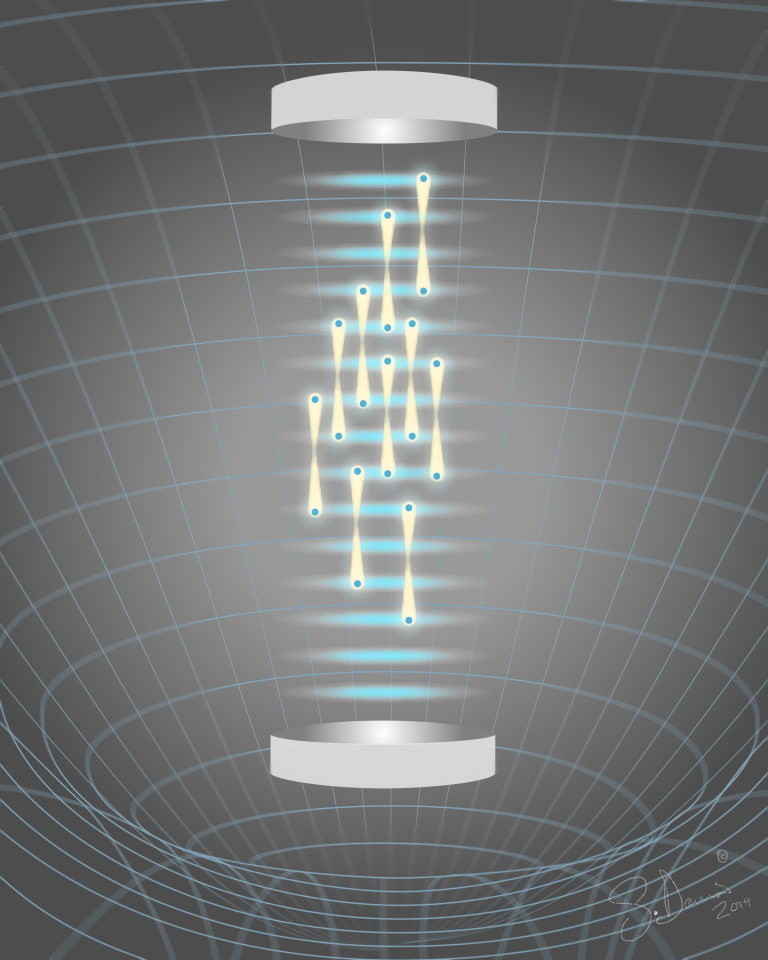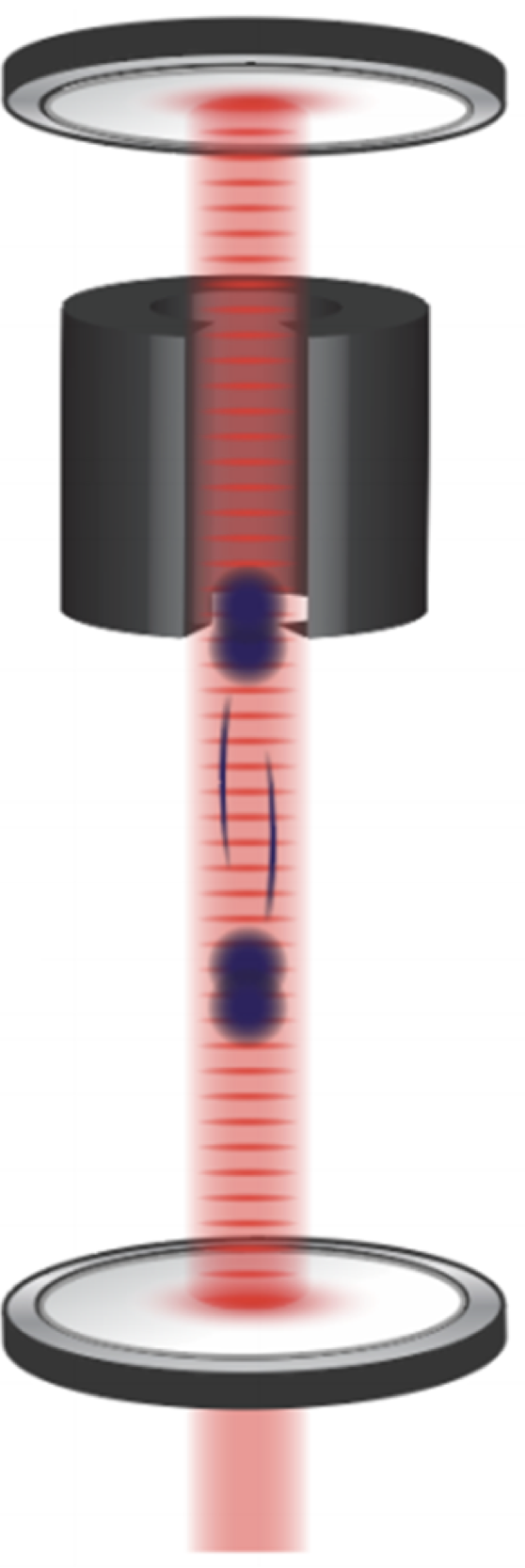precision gravity with atom interferometry
All matter gravitates. But gravity is so weak compared to other forces that it’s often hard to use gravity as a sensing channel. Quantum sensors offer a route to precise measurement where the sensing elements are individual atoms. We aim to develop cutting edge sensors with atom interferometry, and to use them in applications ranging from gravity surveys in the field to tabletop tests of dark energy models.
atom interferometry
Atom interferometry is a sensitive technique for precision measurement of gravity and other forces.
Atom interferometers are like optical interferometers, but with the roles of light and matter reversed: rather than using matter, such as mirrors, to manipulate a light wave, atom interferometry uses laser pulses to split, redirect and recombine the wavefunction of an atom.
smaller, more sensitive atom interferometers
Atom interferometers could be made more compact and precise with novel geometries that hold the atoms inside of an optical cavity using pristine intracavity wavefronts. The interferometer then occupies only a tiny volume in space, enabling the device to be substantially scaled down in size.
Probing gravity by holding atoms for 20 seconds
Science 366, 6466 (2019) (open access) and arXiv
Victoria Xu, Matt Jaffe, Cristian D. Panda, Sofus L. Kristensen, Logan W. Clark, Holger Müller
Testing sub-gravitational forces on atoms from a miniature, in-vacuum source mass
Nature Physics 13 (2017) (free) and arXiv
Matt Jaffe, Philipp Haslinger, Victoria Xu, Paul Hamilton, Amol Upadhye, Benjamin Elder, Justin Khoury, Holger Müller.
Atom-interferometry constraints on dark energy
Science 349, 6250 (2015) and arXiv
Paul Hamilton, Matt Jaffe, Philipp Haslinger, Quinn Simmons, Holger Müller, Justin Khoury
Atom interferometry in an optical cavity
Physical Review Letters 114 (2015) and arXiv
Paul Hamilton, Matt Jaffe, Justin Brown, Lothar Maisenbacher, Brian Estey, Holger Müller
applications
Our lab aims to develop a precise trapped atom interferometer and utilize it for a wide range of exciting scientific applications, such as:
mobile gravity surveys of Yellowstone National Park
non-invasive archaeological surveying of buried structures
fundamental physics at low energy: beyond-Standard-Model physics and fifth-force searches
remote sensing of underground resources (aquifers, mineral deposits, etc.)




